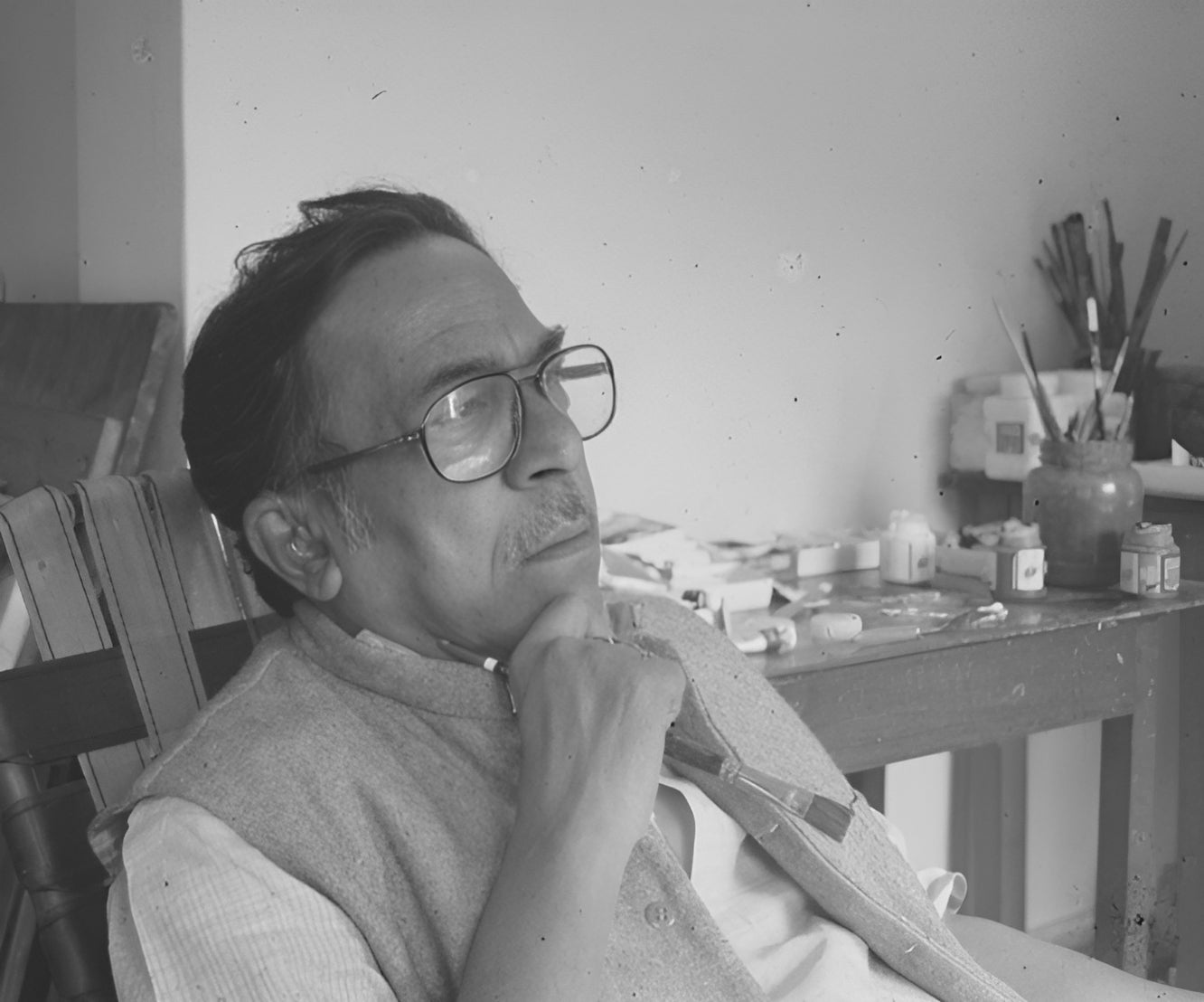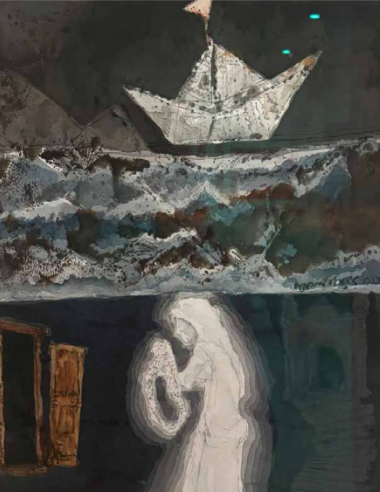
SHYAMAL DUTTA RAY
Shyamal Dutta Ray stood out among Indian painters and printmakers for his mastery of watercolor, a medium he transformed through a deliberate departure from its traditional delicacy and spontaneity. Born in Ranchi on May 8, 1934, he trained at the Government College of Art and Craft, Kolkata, earning his diploma in painting in 1955. While his early work involved oils, Dutta Ray’s profound engagement with watercolor defined his mature practice.
His paintings reveal a dense, emotionally charged approach, utilizing somber tones and saturated colors to create atmospheres thick with psychological tension. The intensity of his palette and composition challenges the notion of watercolor as a fragile or light medium, instead offering a complex visual language that conveys deep personal and existential themes. His imagery arises directly from personal experience, resulting in works that explore urban alienation, existential unrest, and inner conflict. These reflections carry a universal resonance, inviting viewers to confront vulnerability and endurance within the human condition.
Dutta Ray’s career earned significant recognition, with awards such as the Gold Medal from the Academy of Fine Arts, Kolkata (1958), the Rabindra Bharati University Award (1968), and the Shiromani Puraskar Award (1988). His paintings form part of prestigious collections including the National Gallery of Modern Art in New Delhi, the British Museum in London, and the Glenbarra Art Museum in Japan, underscoring his international stature. Associated with the Calcutta Painters, a group pivotal to Bengal’s post-independence modernist movement, Dutta Ray contributed notably to the evolution of Indian art in the latter half of the twentieth century. His innovative watercolor technique and his introspective thematic focus distinguished him within this milieu, influencing subsequent generations. Passing away on May 19, 2005, Shyamal Dutta Ray left a legacy characterized by technical rigor, emotional depth, and a uniquely personal visual lexicon. His work remains a powerful testament to the possibilities of watercolor beyond convention, a medium capable of conveying both vulnerability and complexity through deliberate control and intensity.



